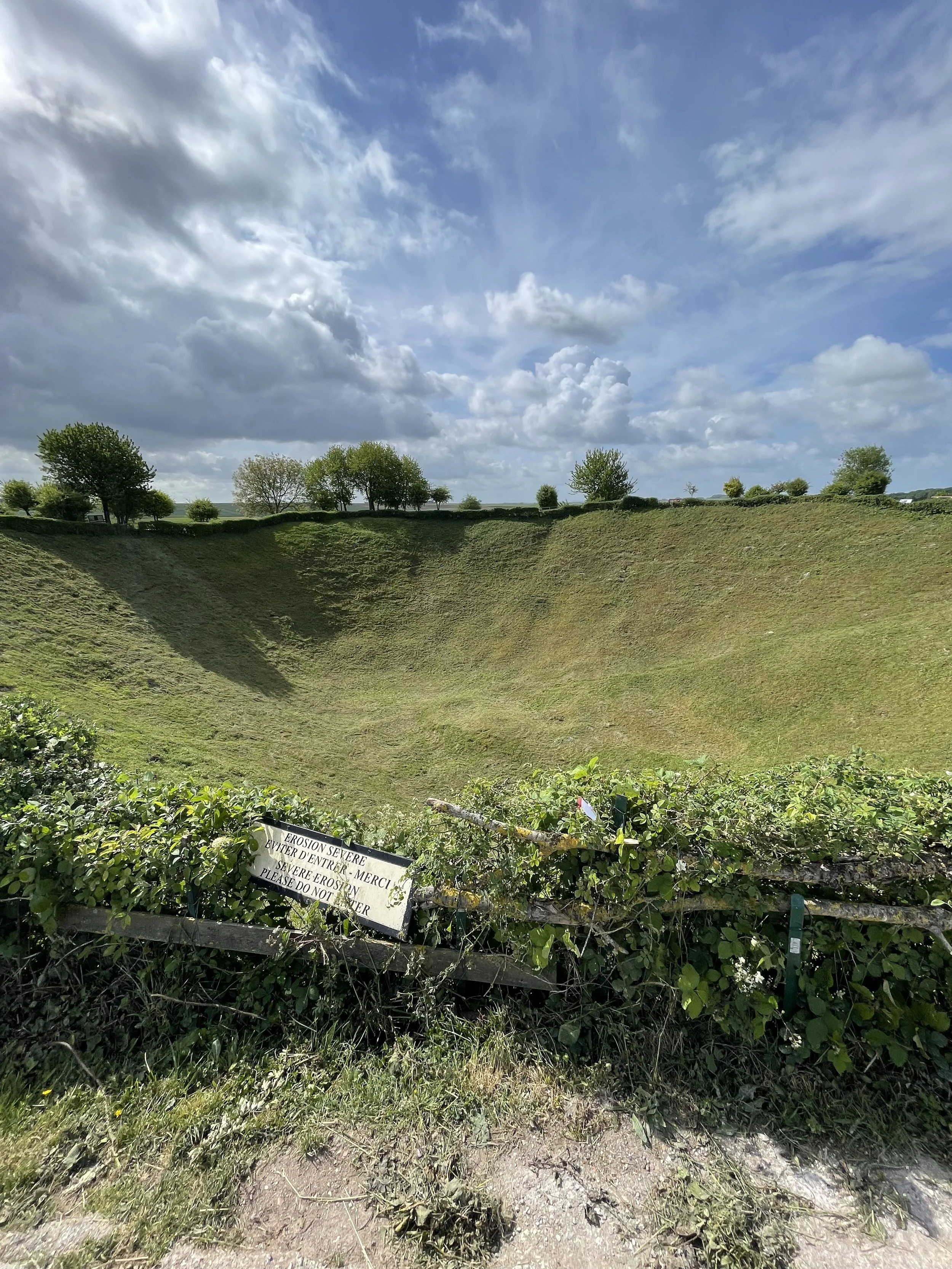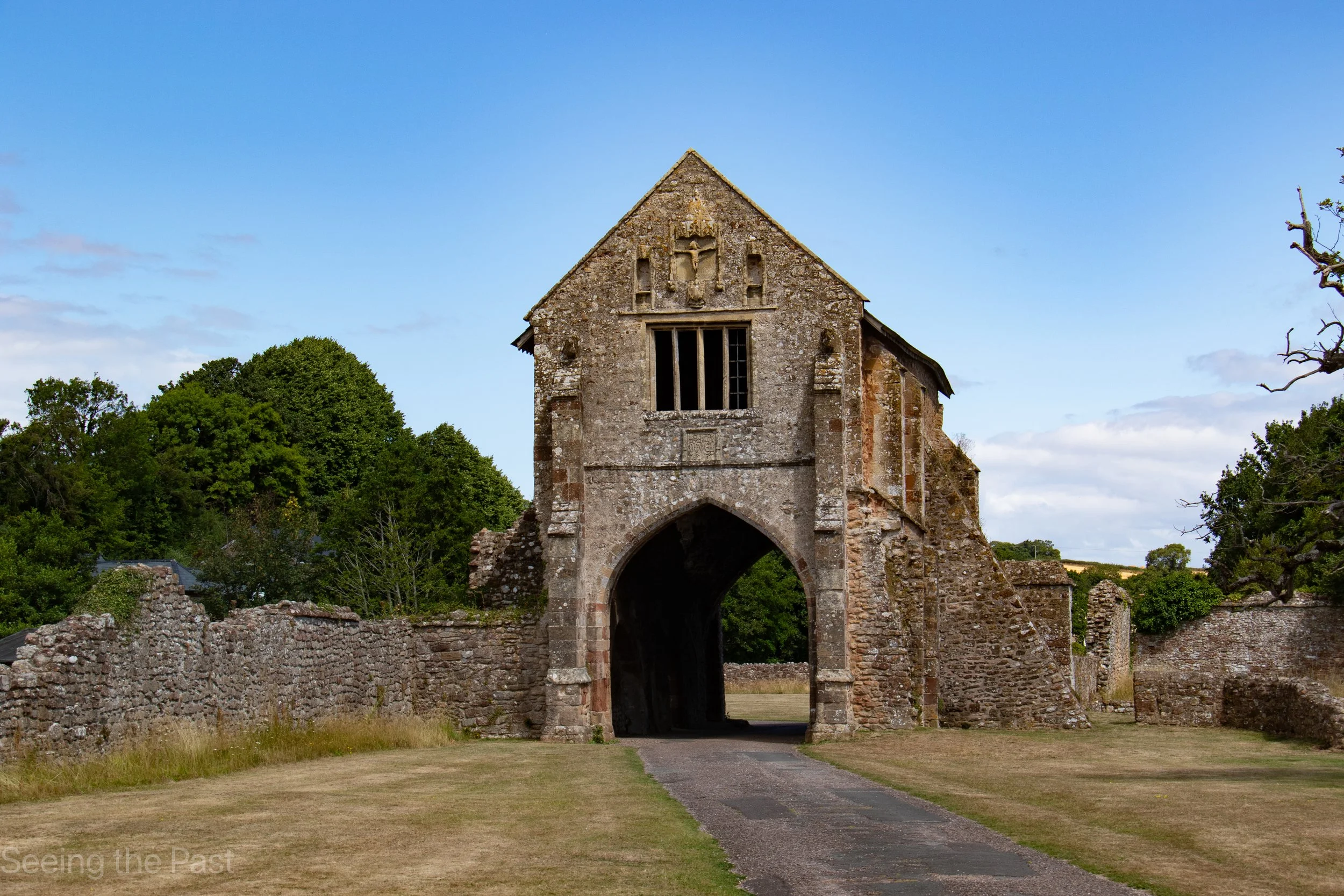The D Day Series. Storming the cliffs; Pointe du Hoc's Legendary Raid and the Men Who Conquered It.
/When planning the D Day invasion, it was imperative to take out the the six 155mm guns at the top of Pointe Du Hoc. These massive guns were 4 miles (6.5) km) from the centre of Omaha Beach and 7 miles (11km) from Utah beach . They had a range of 15 miles (25km) and so both of the American landing beaches were easily within their range. As you can see from the photos above and below, to get to the guns was not going to be easy and would require climbing 110 feet (35 m) tall cliffs!
One particular group of soldiers specialised in such a task, the “Rangers” and in particular, the 2nd Rangers, led by Lieutenant Colonel James Rudder. The photo below show them going up the cliffs two days later with supplies.
Public Domain.
If everything went to plan, the mission to get to the top of the cliffs unharmed was going to be hard but even getting to the bottom of the cliffs on D Day proved difficult. On the 5th and 6th June, heavy bombers from the RAF attacked Pointe Du Hoc and this was followed at 5.50 am on the 6th June with the USS Texas firing at it with its 14 inch guns. At 6.10 am 18 medium bombers from the 9th Air Force added their bombs to the list!
Earlier, at 4.45 am, three companies of Rangers, 225 men, set out in 10 Landing craft with the aim of landing at 7.10 am. Each of their landing craft had three pairs of rocket mounts that could fire grappling hooks (also known as grapnel) up the cliffs. Two grappling hooks were attached to long lengths of rope, two were attached to rope that had wooden cross bars at one foot intervals and two were attached to rope ladders with rungs every two feet. They also carried two rocket launchers that could be carried to the beach that were attached to plain rope. They also carried steel ladders that were in 4 feet interlocking sections that had been already made into 16 feet units, which in total could form a ladder of 112 feet! Their plan was one man would climb the ladder, cut a foothold in the soft cliff face and then lock another 16 foot ladder into it and quite quickly ascend the cliff.
Above; a grappling hook or grapnel, displayed in the D Day Museum at Arromanches.
Along with the landing craft were two dukws which carried more ladders and other equipment such as Lewis Guns. One of these was not going to make it ashore as well as a landing craft that got swamped with all the men having to be rescued.
Below; a DUKW displayed at the Overlord museum.
When heading for the Pointe Du Hoc, poor visibility and strong currents took them too far eastwards and so they had to struggle going against the prevailing currents to get them back on course. This meant they had to travel back parallel to the cliffs and became vulnerable to German fire. Fortunately, a British destroyer, HMS Talybont saw what had happened and moved in to shoot at the German firing positions with its 4 inch guns. The US Satterlee, a destroyer now joined in so that 9 landing craft actually made it to the shore.
Above; USS Satterlee.(public domain)
This meant that they were 40 minutes late and their support group of 500 Rangers, who had been waiting for a success flare, now decided that the original assault must have failed. A decision was therefore made that the support group should be redirected to Omaha beach. It was too late, when the flare showing a successful attack was fired to get the support group to help them press inland and hold onto what they had captured against a German counter attack.
How did the Rangers succeed in their assault of Pointe Du Hoc?
It was a difficult task getting to the cliffs but their task was to be even more problematical when they landed. The beach they landed on was only 30 yards wide and was full of bomb craters which made it difficult to cross, let alone unload equipment. However, despite all their problems the first Rangers got to the top of the cliffs within 10 minutes.
With Rangers shooting from the beach at anyone close to the edge, the Germans found life difficult when the rockets were fired.
Some brief accounts of some of the landing craft
Landing craft 861. Unfortunately, all of its rockets failed to reach the top of the cliffs. The rope had been soaked as they travelled towards the cliffs and became very heavy, too heavy to reach the top. Quickly, a decision was made to bring the portable rockets across the beach and fire. Being closer to the target, the first hook took grip and Harry W Roberts began to climb. Having ascended about 25 feet, Roberts fell to the ground because a German soldier cut his rope! Undeterred, he tried again with the second launcher and Roberts later estimated that it took him only 40 seconds to get to the top!
Landing craft 862. One plain and two toggle ropes succeeded it making it to the top but one toggle rope soon fell fell to the ground.However, 3 Rangers rapidly made it to the top and dived into a shell hole for cover.
Landing craft 888. None of the ropes fired from the shoreline 35 yards away reached the top of the cliffs. Two Rangers tried to free climb the wet clay cliff face which proved to be too slippery and they also failed. The next plan worked however. Nearby, next to the cliff face, a mound of soil about 35-40 feet high had built up from all the shells and bombs that had hit the cliff over the previous 24 hours. A 16 foot ladder attached to a toggle rope was carried to the top of the mound and from there manoeuvred upwards allowing the men to ascend to the top.
Landing craft 722. This had few problems and so only 3-4 minutes after landing, Rangers succeeded in reaching the top.
The rangers had studied detailed maps of the top of the cliffs and photos but the bombing and shelling had destroyed so much that they could hardly recognise anything. Fortunately, the numerous bomb craters gave them plenty of cover as they took out all the gun emplacements and including the anti-aircraft guns. However, although they sent grenades and bazooka rounds through the firing slits of the observation post, it took another day and some demolition charges to make the remaining 8 German soldiers to surrender.
Above; a contemporary photo with Germans being taken prisoner.(Public Domain)
What shocked the Rangers, however, was the lack of the large guns, the main target of their mission. These had all been moved. Some emplacements and casements had dummy barrels made of telephone poles to trick reconnaissance aircraft but none had big guns. At around 9.00am, the Rangers were moving inland to find the guns and a patrol of two came across a camouflaged gun position covering 5 of the 6 large guns and a large amount of ammunition. They had been moved to keep them safe from allied bombing until their secure casements were completed. These were now swiftly put out of action with powerful thermite grenades destroying their recoil mechanisms among other things. The sixth gun was never found.
Above and below; Two of the casements that were to be used once the guns had been moved back. You can see how strong they would have been.
Throughout the next two days they had to resist a German counter attack with some soldiers even using German weapons and ammunition because they had run out of their allied bullets etc. Reinforcements eventually arrived and Pointe Du Hoc became a historic battle. Only 75 of Rudder’s men survived fully fit. Rudder, himself survived despite being wounded twice.
The 2nd Ranger Battalion went on to serve the Allies all over Europe for the rest of the war but were not required to use their special skills that they employed in this courageous and historic assault.
Above; a monument dedicated to the Rangers on top of the old observation post.
Below; looking out from the observation post.
Below; the next few photos show some of the gun emplacements etc, that can be visited.




























Buckler’s Hard has three historical phases; a proposed sugar town that failed, a shipbuilding yard initially providing ships for the Royal navy and a base for various things linked to World War Two but especially D Day. Walking from the car park you suddenly come across this beautiful, unmodernised, Georgian street. One side of the road contains an amazing museum of all the activities that have taken place over the last 300 years. It includes some intricate models of sailing ship building here, loads of artefacts and full size waxwork models illustrating life in the late 18th and early 19th centuries.